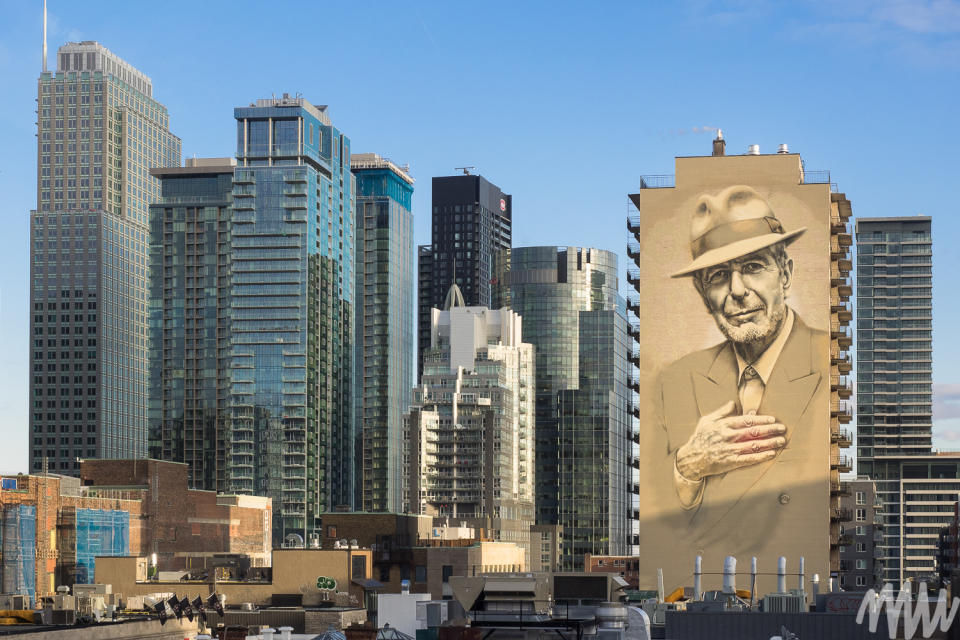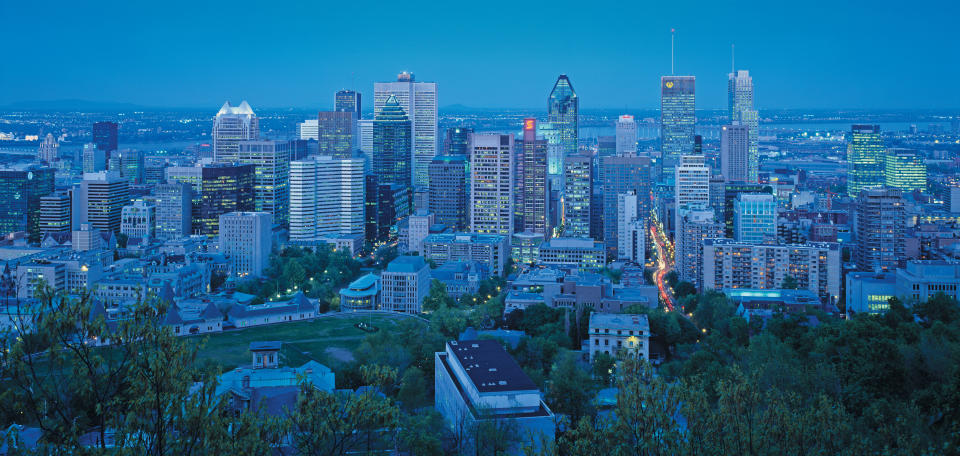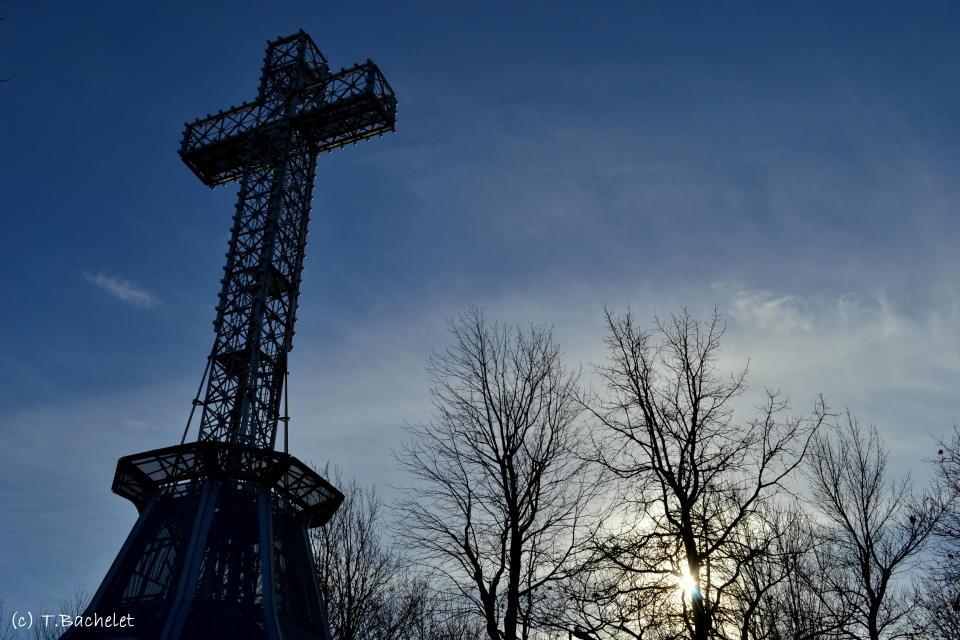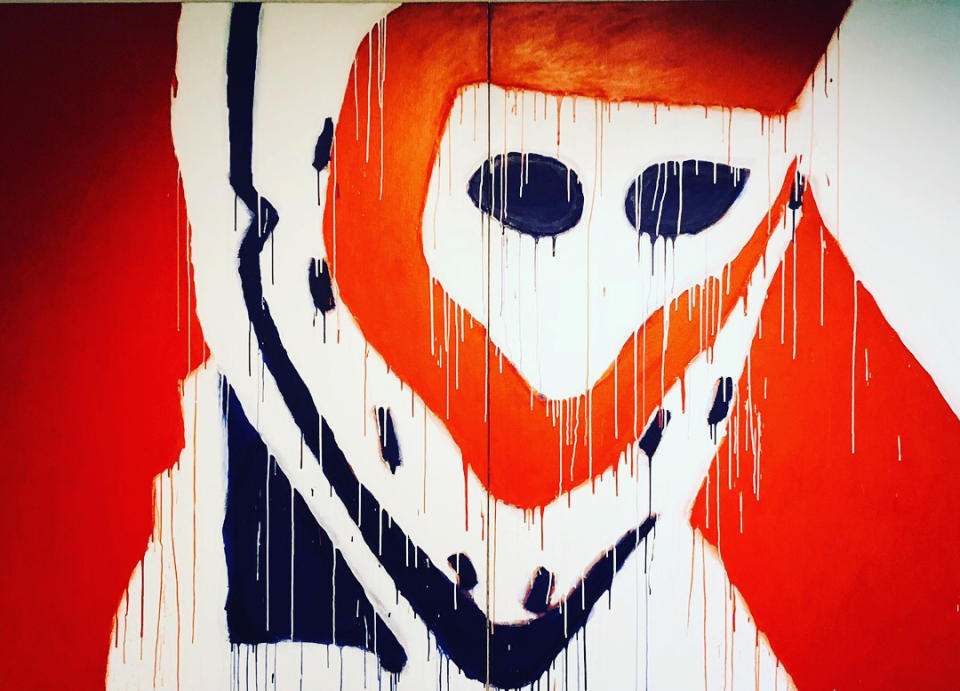There's so much more to Montreal than smoked meat and hockey (but those are pretty good too)

The mission was clear. Not simple or straightforward exactly, though still clear: Persuade my daughter to choose McGill when picking where to go to university next year. Hard choices would have to be made. The fine schools of Halifax, Toronto, Vancouver, or McGill, the sentimental favorite, my alma mater. To achieve this I had three days, two nights… one weekend, which in Montreal should be more than enough time. Not to experience the whole city, mind you, but certainly to savour all of the key haunts. Indeed, my biggest challenge would be simply narrowing the list. Do I focus on the history and culture here, the food, the music? Or just the campus itself?
Part of the appeal would be strictly rational. For the past 13 years in a row McGill has ranked first among large universities in Maclean’s annual survey of the top schools in the country. And last year, the UK-based education consulting firm Quacquarelli Symonds judged Montreal to be the best city in the world for students, overtaking Paris on the 125-city list for the first time in five years.
A much bigger part of the appeal, however, would be purely emotional. She had to want to be here. That’s never been an issue for Montreal, which has always been an incredibly alluring destination for young people. The city exudes personality, ambience, community. It’s commemorated on the walls and celebrated in the streets. And while I may be blurring the lines here a bit between where the school ends and city begins, that’s reasonably fair. It all counts as Montreal. It’s a big and enticing umbrella.

The sun pours down like honey
Indeed, visitors to the city can hardly help but be swept up in the adoration now surrounding a certain alum from the class of 1955. The rare poetry grad who truly hit it big with his studies, Leonard Cohen now adorns the sides of not one but two buildings downtown and is the star of a major exhibition at the Montreal Museum of Contemporary Art (MAC).
While it would be a stretch to say his music defined the city – after all, he sang almost exclusively in English – Cohen’s local origins and influences have never in doubt. One of his most beloved songs, Suzanne, of course, pays homage to his friend with a “place near the river” in Old Montreal, where they’d walk past “our lady of the harbour”, the angel atop Notre-Dame-de-Bon-Secours which points out towards the boats going by.
If he wrote nothing else about the city, that song would be connection enough. Yet two years ago he cemented his ties and closed the loop, featuring the Shaar Hashomayim Synagogue Choir on the title song of his final album. Cohen, who grew up attending Shaar Hashomayim, said that he wanted to return to the sounds and liturgies of his youth on what he knew would be his last record. His funeral would be very quietly held at the temple within weeks of the album’s release.
In the 18 months since his passing, the tributes and swelling of civic pride in the city seem only to have steadily intensified. Kevin Ledo’s nine-storey mural near Cohen’s home on St. Laurent Boulevard emerged as the first permanent memorial. It was soon followed by his 20-storey likeness overlooking the pubs and restaurants of Crescent Street (pictured above). This one, based on a 2008 photo by his daughter Lorca, has Cohen wearing his trademark Trilby and radiating a distinct aura of grace and cool. Montreal could hardly have a more coveted or authentic cultural figurehead. And unsurprisingly, the mural is quickly on its way to becoming one of city’s most iconic and photographed landmarks.
I’d love my daughter to feel that moving here would admit her membership to such effortlessly suave citizenry. Montreal may be a good bit grittier than her Toronto home, yet if it could hold such ties to the likes of Cohen, well then, surely that says something.

It happened here
Of course, Cohen is not the only musical legend to leave a lasting imprint on the city. John Lennon arrived here with Yoko Ono during the height of the Vietnam War in 1969 to hold their famed ‘Bed-in for Peace’. His initial idea, admittedly, was to stage it in New York, but a drug bust ruled that out. Plan B was the Bahamas, though after the first night they decamped to Montreal. The Queen Elizabeth Hotel, to be exact (now the Fairmont Queen Elizabeth), where John and Yoko showed up with no money yet needing four rooms. As soon as they moved in, they tossed most of the furniture out into the halls, pushed a bed against the window, plastered posters on the walls and invited fans, reporters and fellow musicians to pile in. Somehow during the week they recorded “Give Peace a Chance,” memorializing the occasion for all time.
While the media circus was a huge nuisance for the hotel then, now it’s their unrivaled claim to fame and Suite 1742, the eye of the storm, is one of the most famous hotel rooms in the world. It’s very much still that, and available for booking for $1,969 per night. It would be misleading to call it a tourist site, as it’s not open for general viewing yet it’s certainly a tribute to John and Yoko and the events of that week. It is representative, though not in any way a replica, as that would just mean old-fashioned decor and 50-year-old furnishings that weren’t even welcome in the room at the time. Instead the Fairmont hired Sid Lee Architects, as part of a $140-million, year-long renovation of the entire hotel, to create a room inspired by the couple, complete with photos, videos, archival items, and naturally, the words “Hair Peace”, “Bed Peace” pasted on the windows.
Like the Cohen mural, Suite 1742 is not by itself going to sway anyone to move to Montreal, yet it does add to the aura of the city as a place where history happens, and creative geniuses have long sought inspiration. (Note to self: Remember line when next mentioning McGill)

The beautiful backdrop
If Lennon and Cohen provide a sense of the sizzle, the substance is unmistakably the neighbourhoods, and how they radiate outward from the mountain. Mont Royal, in name and form, links literally to the origins of Montreal. It’s the backdrop, the muscular presence that lends both beauty and physicality to the skyline. And not just that, it’s also a massive park in middle of the city. From the corner of St. Catherine Street and McGill College, the centre of downtown, to the famous observation deck atop the mountain, it’s a 20-minute walk, with much of that on gently rising, tree-lined trails.
For those less inclined to walk, there are also plenty of places to park, and surely many take advantage of that when they come to ski in the winter, or swim in the summer. This morning when we walk up here, there are so many runners and cyclists enjoying the paths it feels like there’s a triathlon in progress. But no, apparently it’s just a standard Saturday morning in Montreal.
Before heading back down, I want to visit two sacred sites, one that you can see from across the city, the other tucked somewhat discreetly aside. This would be Cohen’s grave in the Shaar Hashomayim cemetery, on the northern slopes of the mountain. Unfortunately that promises to be over an hour’s walk and very possibly pushes the fandom business a bit too far, on what’s supposed to be a fun-filled McGill marketing weekend.

Instead, I settle for the initial option: The 30-metre cross that looms above the skyline. The first cross was put here 375 years ago by Paul de Chomedey de Maisonneuve, the founder of Montreal, as a hosanna to the Virgin Mary for what he believed was her intercession in ending disastrous flood. The cross has since been upgraded countless times, with the latest version now able to light up in different colours depending on the occasion, such as World AIDS Day (red) or St. Jean-Baptiste Day (blue).
From a distance it remains a beacon of the city’s deeply Catholic heritage. Up close it possesses an undeniable grandeur, though seems excessively fortified, as if the designers’ main concern was keeping drunken students from trying to scale it. (And in fairness, having belonged to a fraternity at the bottom of the hill, I know it was the rare Friday house bash that didn’t result in someone setting off to do it.)

Three buildings on two sides of Sherbrooke
It being early March, and Montreal, the skies are gray and snow is starting to fall. That makes it wonderfully atmospheric at the top of the mountain, though it also means it’s freezing cold…. so we decide to seek some shelter. The Montreal Museum of Fine Arts is featuring an exhibit on Napoleon, which sounds interesting enough, even if we’re not totally sure if we’re going to see art by him, about him or that happened to once owned by him.
It’s actually that last one, some 400 works borrowed from the Louvre and the J. Paul Getty Museum, among other world-class galleries. Not that we see any of it. Somehow we get sidetracked among the other collections, which is easy enough to do here. Partly that’s a function of the museum’s design, which now stretches over three ‘separate’ buildings, two on the north side of Sherbrooke, and the main gallery on the south. Every 15 minutes or so we seem to pop in a different building, trying to get our bearings.
The main reason we never make it to Napoleon is that the museum’s contemporary art is so compelling you can easily spend all day simply soaking that in. The two pieces in particular that jump out at me are Kehinde Wiley’s 2015 “Simeon the God Receiver” and Serge Lamoyne’s 1975 “Dryden”. Wiley is the 41-year-old artist who recently rose to global fame with his official portrait of Barack Obama. His use of vivid colours and striking imagery will stop you in your tracks.
Equally arresting, and maybe mostly because I grew up idolizing Ken Dryden, is Lamoyne’s portrait of the Hall of Famer’s goalie mask. At first glance, the impact is largely lost on my daughter, who was born 21 years after Dryden played his last game, but for anyone coming of age when he wore that iconic mask while backstopping the Canadiens to six Stanley Cup wins, Lemoyne’s painting symbolizes the Habs peak greatness. (Dryden also went to McGill, I feel the need to point out).

Old Montreal
Our next, and last stop, today is Old Montreal, which really is the ultimate tourist destination, yet any proper sales push for the city does require a stop here. Plus there are two relatively brand new experiences to be had. The first is the Observation Wheel by the port. Installed in September, it’s one of those oversized ferris wheels you now see popping up in visitor meccas like Las Vegas, Paris and London. The glass-encased gondolas seat six and have a little screen inside indicating elevation. At the top of the crest we reach 60-metres, a height that doesn’t seem particularly harrowing, except when you’re rocking back and forth, and the people skating down below in the neighbouring rink look like ants. Then 60-metres seems outrageously high. The $25-per-adult ride is supposed to last 20 minutes, though we were finished in what feels like much less time, which may be sign of how riveting it was, or that it simply ended early.
Within a few minutes walk of the Observation Wheel is the undisputed, ranked-first-on-every-list tourist attraction in the city. The Notre-Dame Basilica is the oldest Catholic church in Montreal, and the ne plus ultra setting for solemn occasions. It’s here where Canadiens’ legend Rocket Richard received his state funeral in 2000, while thousands lined up outside to pay their respects. The dignitaries would return to these pews a few months later to mark the passing of Pierre Trudeau.
The church is now so besieged with visitors that it levies a $10 admission fee ($5 for children), unless you’re there to attend a mass. The attraction is obvious. With the ceiling vaults a striking azure blue, dazzled with golden stars, the interior is almost Disney-esque, as if the makers of “Under the Sea” had conjured it when trying to create the most stunning sanctuary possible.

If the Hollywood comparison seems a tad disrespectful, know that Notre-Dame has now taken a solid and seemingly very savvy step in that direction with the commissioning of Aura, an intense multimedia spectacle put on every evening, except Sundays. The 20-minute production sees the altar and surrounding walls light up – an understatement – with laser beams while orchestral music thunders from every corner, evoking the sensation of the heavens opening up, while still avoiding being overtly religious. The night we attend 700 people line up, with tickets, to see the first show. So many evenings are now sold out that we’re told bookings often need to be made weeks in advance.
The weekend wrapping up, a decision awaited. Would September signal the start of many more Montreal trips to come, visiting our daughter in her new digs, ideally in a dorm? Maybe, though not for certain. There are more cities to see, more campuses to check out. Thankfully, Montreal sets the bar high. That’s all that can be asked for now.


